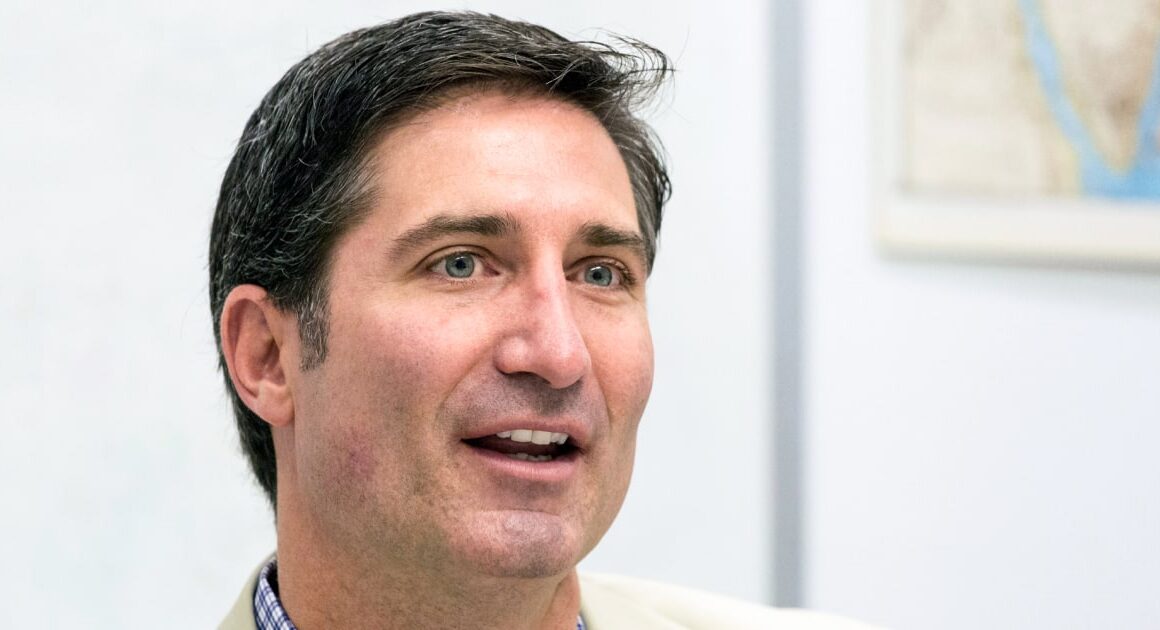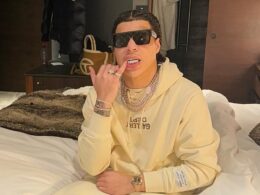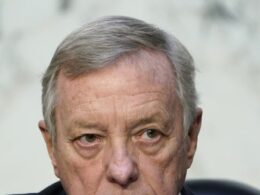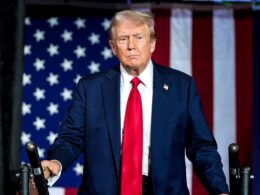Wall Street believes Brian Niccol is the right choice to turn around Starbucks — and move the chain past the decadeslong Howard Schultz era.
Starbucks tapped Niccol as its latest chief executive and chair on Tuesday. Niccol replaces Laxman Narasimhan, who took over the top job in March 2023 after being handpicked by former CEO Schultz. In its last two quarters, Starbucks reported same-store sales declines as its U.S. business floundered. Once he takes over, Niccol will be charged with rejuvenating demand for the company’s coffee.
“In our view, Starbucks picks up a hall of fame restaurant CEO, and his appointment as Starbucks CEO and Chairman suggests a new era is underway,” TD Cowen analyst Andrew Charles wrote in a note to clients, emphasizing the importance of the combined role.
Investors are confident that he can revive the company. Shares of Starbucks climbed 20% in afternoon trading on the news, putting them on pace for their best day since the company’s IPO in 1992. Meanwhile, Chipotle’s stock fell 9% as shareholders bemoaned the loss of the longtime chief executive.
Piper Sandler, TD Cowen and Baird all upgraded Starbucks stock in the wake of the leadership changes.
Other analysts wrote glowingly of Niccol, seeing him as the right person to tackle Starbucks’ sluggish sales. A challenging consumer environment, worsening customer experience and rising competition from smaller coffee shops have hurt the chain’s performance recently.
“We view this as a dream hire for SBUX, and could not think of a more equipped leader to take a fresh look at SBUX’s operations, competitive positioning and overall strategy,” Oppenheimer analyst Brian Bittner said.
End of an era?
Niccol’s hiring could also spell the end of Schultz’s huge influence over the company he turned into a global coffee giant.
“Importantly, Brian is likely the one restaurant executive that has the gravitas to address the Howard Schultz Founder ‘overhang,’” Evercore ISI analyst David Palmer wrote.
Schultz served as CEO from 1986 to 2000, from 2008 to 2017 and then from 2022 to 2023, stepping in twice to save the company when sales turned sluggish. His last return sparked concerns about the company’s succession.
At the end of his last stint, he swore that he wouldn’t return as chief executive again, although his presence still looms large over the company. In May, after a brutal quarter for Starbucks, he wrote an open letter on LinkedIn about the company’s challenges and offered advice to its leaders — without naming Narasimhan.
Even after his retirement, Schultz’s involvement in the company has remained “a question hanging over the stock,” Morgan Stanley analyst Brian Harbour wrote in a note Tuesday. Mellody Hobson, who stepped down as Starbucks chair to become lead independent director as part of Tuesday’s leadership shake-up, said on CNBC’s “Squawk Box” that she told Schultz about the discussions with Niccol, keeping him in the loop despite him having no formal role within the company anymore.
Schultz also remains a major Starbucks shareholder, with a roughly 2% stake.
Schultz endorsed Niccol’s hiring in the press release announcing the shakeup. In a statement, the chairman emeritus said he believes that Niccol is the leader the company needs at a “pivotal moment in its history.”
Some analysts believe that having Niccol, an experienced restaurant CEO, in the driver’s seat could mean that Schultz finally moves on. Niccol will also succeed Hobson as chair of the board, giving him more latitude to make changes.
“This will be the last time investors care what he has to say because Niccol now has the wheel and there is no longer ANY room for a backseat driver,” Gordon Haskett analyst Don Bilson wrote.
Niccol also has previous experience taking over a founder-led brand and making it his own. When he joined Chipotle in 2018, he took the reins from founder Steve Ells, who had led the chain since 1993. Niccol moved the burrito chain’s headquarters from Denver to Newport Beach to attract different talent — and maybe evolve the brand from being founder-led, as Bernstein analyst Danilo Gargiulo wrote in a note.
Challenges ahead
While analysts largely cheered Niccol’s appointment, some were more cautious, noting that Starbucks is a larger and more complex business than Chipotle.
“Starbucks is a much more complicated model than Chipotle, with company and licensed stores, domestic and international locations, and a significant presence in struggling China,” BTIG analyst Peter Saleh wrote.
Chipotle has few licensed locations, except for some airport restaurants, and a relatively small international footprint, although Niccol has been pushing to grow its presence outside the U.S. in recent years.
Starbucks, on the other hand, has more international locations than U.S. cafes. And while investors have recently focused on the chain’s domestic performance, China, its second-largest market, has continued to struggle as competition there ramps up and the country’s economy lags.
Narasimhan said on the company’s latest conference call that he was exploring “strategic partnerships” for its China business, which could include a joint venture, tech partnership or other options. Niccol’s appointment could mean that Starbucks abandons that exploration, although he does have some experience with spinoffs from his time as head of Yum Brands’ Taco Bell. While he was there, the conglomerate spun off its China business into Yum China.
And while Chipotle’s burritos are still in high demand, consumers’ economic concerns have dampened their desire for coffee. That may prove to be a tougher hurdle for Niccol than investors anticipate.
“His challenge is to connect with a new customer,” Wedbush analyst Nick Setyan said. “Aside from the power to change the direction of macro headwinds, we view the shareholder euphoria (as expressed in the share price this morning) as premature.”
,








